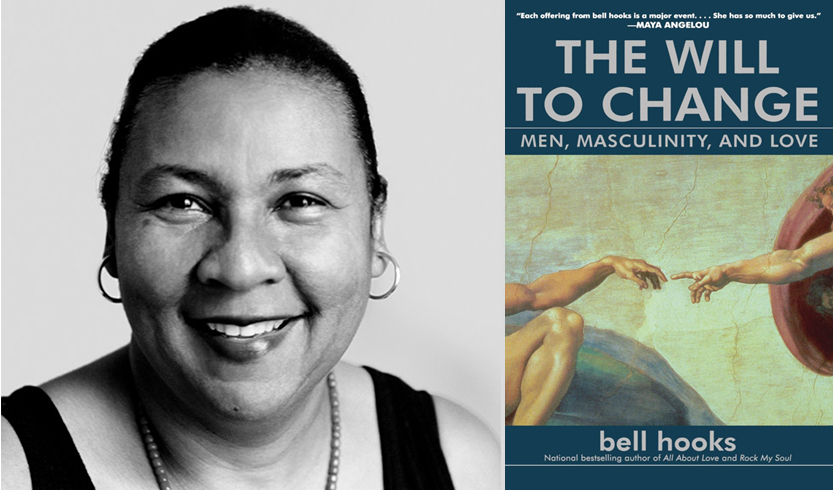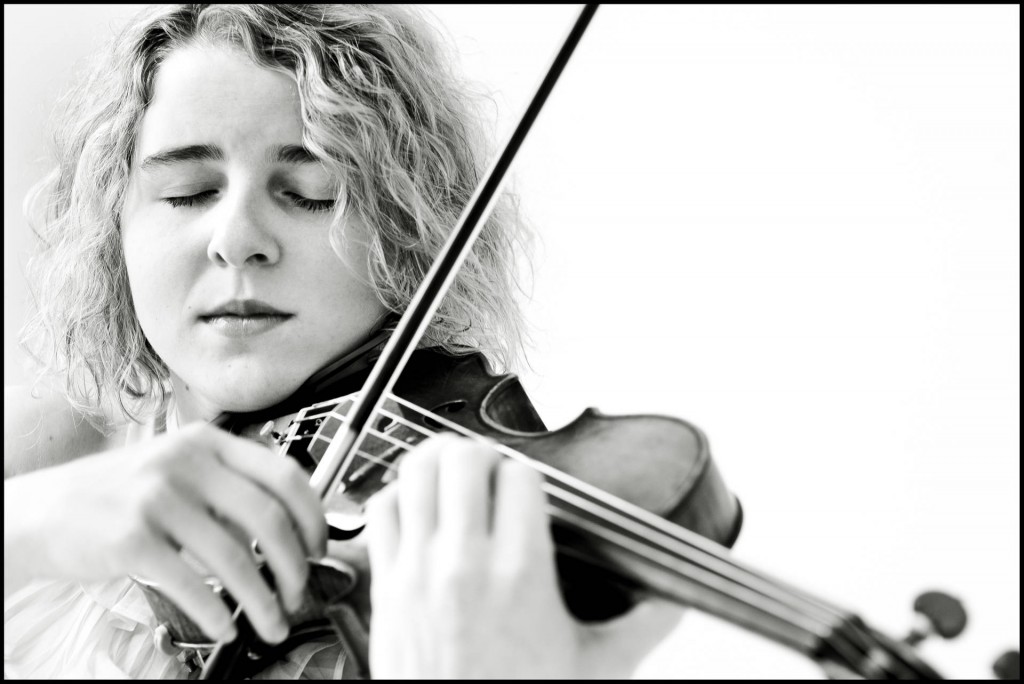In a compelling and widely read New York Times editorial published Thursday, “The Boys Are Not All Right,” Michael Ian Black argues that the blame for our society’s gun-violence epidemic lies, at least in part, with our broken standards of masculinity. While feminism has expanded the definition of womanhood, he writes, no commensurate movement has helped boys to reimagine what it might mean to become men: “I think we [men] would benefit from the same conversations girls and women have been having for these past 50 years.” Black is correct that masculinity has failed to evolve, but conversations about that failure have in fact been happening for some time. One person who has consistently tried to break the silence is bell hooks. In her 2004 book The Will to Change: Men, Masculinity, and Love, hooks, like Black, criticizes what she interprets as an intellectual and cultural silence on the subject of men. “Feminist theory has offered us brilliant critiques of patriarchy,” she writes, “and very few insightful ideas about alternative masculinity, especially in relation to boys.” In personal, approachable prose, she examines how both women and men perpetuate a patriarchal model of masculinity—albeit to disparate reward—and explores “what the alternative to patriarchal masculinity might be.” Fourteen years later, it strikes me that the continued paucity of such alternatives stems less from a lack of answers than from an unwillingness to ask the question. —Spencer Bokat-Lindell
The press materials dub Eleanor Davis’s Why Art? a manifesto, and I wouldn’t know what to call it otherwise except to say that it, like art itself, defies easy categorization. The book (which, though filled with word balloons and pictures, is neither quite a comic nor not-a-comic) begins as a tongue-in-cheek primer on what is art. It informs us that the most important categories are color (orange art, blue art, and blue-and-orange art) and size, but the seeming simplicity quickly devolves into categories such as mask artworks (God masks, ugly masks, and wolf masks) and mirror artworks and edible artworks and container artworks. From there, the book only gets stranger. Characters and narrative emerge, the book spills into bold, moving full pages of black and luscious double-page illustrated spreads. The world is ripped apart by natural disaster, put back together by artists, and intentionally ripped apart again as one of the characters screams, “Show us how to save ourselves.” The question of what is art remains perpetually unanswerable, beyond Supreme Court justice Stewart’s “I know it when I see it,” definition for obscenity, but Why Art? answers its titular question so powerfully that it’ll leave you parched and running towards the closest museum. —Nadja Spiegelman
As a young artist, Tom Wesselmann (a forefather of the American Pop art movement that took hold in New York in the early sixties) feared that he might spend his career as a miniaturist. Fortunately enough for us, eventual success afforded him the space required to create the monumental works on view through this Saturday at the Gagosian Gallery. “Standing Still Lifes” unites nine of these joyous pieces, exhibited together for the first time. Each work is composed of multiple staggered canvases that create an unexpected illusion of two-dimensional space. The everyday objects in his massive compositions, rendered at ten times their familiar size and painted in strikingly vivid color, are imbued with both wit and light. Gazing up at them, the viewer feels a bit like Alice in Wesselmann’s dream-land. The artist favored gleaming surfaces, whether they be a glowing ripe orange, a shimmering jar of cold cream, or a reflective silver house key; he ‘polished’ each massive shaped-canvas until it shined. An intimate section of the gallery is devoted to Wesselmann’s process, and it’s not to be missed. It features a looping video, delightful maquettes, sketches, and notebooks with the artist’s thoughts on color, in his own expressive hand. —Charlotte Strick
There is plenty to be done this week at The Paris Review. As late nights at the office turned into working from home, turned into working from the gym, I picked up a bedside book to prevent any working from bed. It turned out that it was just the inspiration I needed to wake up and do it all again. Stet, by the beautifully direct Diana Athill, is a chronicle of life in publishing. The woman is a marvel of honest self-reflection with a fine memory for joy. She’s clear about what she didn’t like — placing advertisements, working on cookbooks (except with Elizabeth David) — and what she did — doing painstaking edits on crushingly difficult books. Athill, at eighty, proudly includes favorite personal mentions in acknowledgements from books published decades before. As a young person in the book industry, there is nothing sweeter than the permission she gives to enjoy and take pride in working with the words you admire. Athill is frank about the eccentricities of her colleagues and the times she minded being a women in the office and the times she didn’t. The list of writers published under her direction are impressive (Jean Rhys, V.S. Naipaul) but it is the ones I hadn’t heard of that are the most exciting. Some of these books might be out of print in the U.S. but don’t think that will stop me from tracking them down and reading them. I’ve learned to trust a good editor. —Julia Berick
My poor, frail, introverted heart sometimes needs a rest from this crowded city and its aggressively man-made landscape. Enter Aminatta Forna’s lovely novel Happiness, forthcoming soon from Grove Atlantic. Even the novel’s cover is a welcome decentering of the manufactured–I didn’t notice the cityscape set back from the snow-blanketed, winter-dressed trees until well into my reading of the novel. By that point I was well accustomed to Forna’s depiction of urban humankind as one element of a diverse and interlocking ecosystem. This is true both in the structure of her novel, which often dips into chapters which follow animals rather than people, and in its story. Jean, an American wildlife researcher, and Attila, a Ghanaian psychiatrist, run into each other several times on the streets of London and eventually embark on a search for Attila’s missing nephew. Though the scope of the book widens exponentially page to page, it never loses its gentle tone, nor its kind and scientific treatment of each member of Kingdom Animalia, including, but not limited to, the humans. —Eleanor Pritchett
This week, I’ve been waking up early to spend my mornings with Jenny Xie’s first collection of poetry, Eye Level. The small compendium comprises four breathtaking sections. In them, Xie shepherds us from one corner of the world to another: from Hanoi (the capital of Vietnam) to Wat Langka (a Buddhist temple in Cambodia); from Corfu (an island off the coast of Greece) to a noodle shop on East Broadway (in Chinatown). We witness motorbikes cruising past, women perched sidesaddle; we’re told the old wives tales on which, to borrow a phrase from Xie, the poet was fed; we can almost taste the ground pork made by a woman who had once crossed an ocean to begin her life anew. Yet despite Xie’s wide-ranging adventures, we remain burrowed in the mind of this magnificent poet, who braids in the lonesomeness and sorrow of being unmoored and on your own. By the collection’s end, Xie’s beckoned me to her side and soothed my own sadness, which her poems drew out of me from the start. Take these few lines from “Exile,” in which Xie uncovers the beauty of pain: “To pain, which cleans / out everything: / the fantasies that wouldn’t take, / ancient mistakes.” It’s no wonder Juan Felipe Herrera selected Eye Level as the winner of the 2017 Walt Whitman Award of the Academy of American Poets. —Caitlin Youngquist
The Springfield Symphony Orchestra of Springfield, MA, performed its first concert in 1944. My grandparents have been going since 1959. I had the pleasure of joining them this month, and I could soon see that they are not alone in their long-held loyalty to the SSO. Though the atmosphere is quite jovial, the SSO, the largest Massachusetts symphony outside of Boston, is no laughing matter. When the director encouraged the audience to like the SSO on Facebook, the conductor leaned into the mic: “And you can like me too!” Laughter erupted among the light-haired crowd. But any leftover laughs or little coughs or shifting tushes came to an abrupt halt the moment the soloist’s bow met the strings of her violin. Just the endurance needed to head an orchestra through Vivaldi’s Four Seasons would have kept me quiet. But something more was required to hold the silence in this veteran audience, and whatever that something was, Caroline Goulding had it. Goulding debuted at thirteen with the Cleveland Orchestra and has since performed with orchestras all over the country and internationally. This year, at twenty-five, with a GRAMMY-nominated recording under her belt, she is releasing her third album and gracing the West Coast with her tush-stilling performances. She will be playing Brahms in Portland on March 4 and Bruch in Long Beach on March 10. —Claire Benoit
One of the great pleasures of the Olympics is the opportunity it affords to become briefly absorbed in obscure sports. HD Cameras and broadcast commentary invade these hermetic communities for two and a half weeks, and it astonishes me every time how quickly I invest in the rivalries, the Great Ones, the etiquette, and the oddities. Watching table tennis at the 2016 Rio Olympics, I could not get over the fact that the players had to retrieve their own balls. Seeing a great Chinese champion drop to his knees and sweep his arm blindly under the scorer’s table, as I have done so often under couches and cabinets, became more engrossing than the match itself. Last month I would’ve guessed that ice dancing was a sarcastic nickname for figure skating, but last week, as I watched the dominant Canadian pair Virtue and Moir—they of the flawless Twizzle (a term I learned an hour prior)— strut around before their program, smirking at each other like the power couple villains in an ‘80s High School movie, I wanted nothing more than to see them taken down a peg. My absolute favorite Winter sport, though, is relay speed skating. Where so many Olympic sports are essentially lonely, with demarcated lanes and sequences of solo performances, relay speed skating is collective anarchy. It goes like this—the racers complete a lap, their relay partners shadowing them in a central ice holding pen, and when it is time to switch, the partners fall in ahead of the racers, and the racers, in lieu of a baton-pass, shove their partners forward, then fade away to the holding pen, ready to re-enter at the next lap. Pile-ups are frequent and spectacular—the racer slips, the partner stumbles, or, possibly intentionally, the partner careens into the competition like a rubber-suited bowling ball. It is not so much a test of physical prowess as a mental and emotional gauntlet, an athletic strobe light. The 3,000 m Women’s final on Tuesday night ended with so many crashes and disqualifications that the Netherlands won bronze despite not participating in the race at all. Such is relay speed skating, which I love and will forget about within the month. —Matt Levin
from The Paris Review http://ift.tt/2omdpp6






Comments
Post a Comment